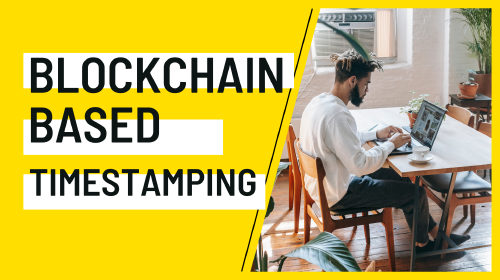Practical Use Cases of Edge Computing in Telecom - Revolutionizing Connectivity
Salomon Kisters
Jul 10, 2023This post may contain affiliate links. If you use these links to buy something we may earn a commission. Thanks!
In today’s highly connected world, the demand for real-time data and low-latency applications is skyrocketing.
Traditional cloud computing models, while efficient in many domains, struggle to meet the stringent requirements of certain industries like telecommunications. This is where edge computing comes into play. By deploying mini data centers closer to the network edge, edge computing helps telecom providers deliver faster, more reliable, and secure services.
In this blog post, we will explore the practical use cases of edge computing in the telecom industry and how it is revolutionizing the way we communicate.
Enhanced Mobile Broadband (eMBB)
With the increasing popularity of bandwidth-intensive applications like video streaming, online gaming, and virtual reality, mobile network operators are faced with the challenge of providing fast and seamless connectivity to their users. By leveraging edge computing capabilities, telecom providers can process and store data in proximity to the end-user devices, reducing the data transmission time and delivering a superior user experience. For instance, content caching at the network edge enables faster retrieval of popular media content, dramatically reducing buffering time and enhancing the overall quality of mobile broadband services.
Internet of Things (IoT)
The rise of IoT devices across various industries, such as healthcare, manufacturing, and transportation, necessitates real-time data processing and analysis. Edge computing plays a pivotal role by bringing computational capabilities closer to the devices themselves, reducing latency and ensuring timely decision-making. For example, in a healthcare scenario, edge computing can enable immediate analysis of patient vital signs or monitoring equipment data, allowing for faster intervention and minimizing potential risks. Likewise, in smart manufacturing, edge computing can facilitate real-time analysis of sensor data, enabling predictive maintenance, optimizing operations, and reducing downtime.
Edge AI and Machine Learning
Artificial Intelligence (AI) and Machine Learning (ML) are becoming increasingly integral to telecom networks. By leveraging edge computing, telecom providers can capitalize on the power of AI/ML algorithms while maintaining low-latency connections to their customers. For instance, edge-based AI models can be used to analyze network traffic patterns, detect anomalies, and mitigate potential security threats, leading to a more secure and reliable network infrastructure. Additionally, edge AI can be employed to perform real-time video analytics, enabling advanced surveillance and monitoring applications.
Ultra-Reliable Low-Latency Communications (URLLC)
Certain applications require ultra-low latency and high availability, such as autonomous vehicles, remote surgery, and smart grid management. Edge computing allows telecom providers to meet these stringent requirements by processing data and executing critical tasks at the edge of the network. For instance, in autonomous vehicles, edge computing enables real-time decision-making by processing sensor data locally, reducing the reliance on centralized cloud infrastructure and minimizing latency. Similarly, in remote surgery, edge computing ensures minimal delay in transmitting commands from the surgeon to the robotic surgical system, enhancing precision and patient safety.
Network Function Virtualization (NFV) and Multi-Access Edge Computing (MEC)
Edge computing also enables telecom providers to virtualize network functions and deliver services efficiently. Network Function Virtualization (NFV) allows the virtualization of network services, such as firewalls and load balancers, which can be deployed closer to the edge of the network. This not only improves the scalability and flexibility of the network but also reduces the costs associated with physical infrastructure. Similarly, Multi-Access Edge Computing (MEC) leverages edge computing resources to enable low-latency applications and services at the edge of the network, enhancing user experience and enabling new business opportunities.
Conclusion
In conclusion, edge computing brings a paradigm shift in the telecom industry, enabling telecom providers to deliver faster, more reliable, and secure services to their customers. With use cases ranging from enhanced mobile broadband and IoT to edge AI/ML and URLLC, the practical applications of edge computing are revolutionizing the way we connect and communicate. As the demand for real-time data processing and low-latency applications continues to grow, deploying edge computing infrastructure will become paramount for telecom providers to stay competitive in the digital era. So, buckle up for a future where edge computing takes telecommunications to new height
Stay informed with the latest insights in Crypto, Blockchain, and Cyber-Security! Subscribe to our newsletter now to receive exclusive updates, expert analyses, and current developments directly to your inbox. Don't miss the opportunity to expand your knowledge and stay up-to-date.
Love what you're reading? Subscribe for top stories in Crypto, Blockchain, and Cyber-Security. Stay informed with exclusive updates.
Please note that the Content may have been generated with the Help of AI. The editorial content of OriginStamp AG does not constitute a recommendation for investment or purchase advice. In principle, an investment can also lead to a total loss. Therefore, please seek advice before making an investment decision.

The Moral Quandary of Technological Obsolescence: Ethical Considerations and Responsible Solutions
Understanding the ethical implications of technological obsolescence and responsible solutions to address societal and environmental impacts.

Advantages and Disadvantages of Blockchain in Accounting - A Comprehensive Guide
Understand the advantages and disadvantages of blockchain technology in accounting practices. Learn how blockchains can revolutionize accounting processes.

What Is Blockchain-Based Timestamping and Who Needs It?
Learn how blockchain-based timestamping works and why embedding blockchain-based timestamping can be a significant competitive advantage for your business.
Protect your documents
Your gateway to unforgeable data. Imprint the authenticity of your information with our blockchain timestamp